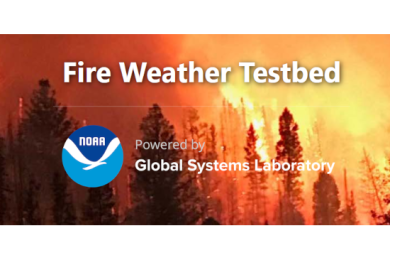The National Oceanic and Atmospheric Administration (NOAA) has recently tested two innovative tools designed to enhance wildfire detection and response. These tools, part of NOAA's Next Generation Fire System (NGFS), were evaluated during a week-long series of simulations at the new Fire Weather Testbed in Boulder, Colorado. The goal: to accelerate and improve the accuracy of wildfire detection and warning capabilities across the United States.
Unveiling the Next Generation Fire System
The NGFS utilizes artificial intelligence to rapidly identify wildfires using data from NOAA’s geostationary satellites. This system can detect fires as small as one acre, allowing for quicker responses during critical early stages. Once a fire is detected, the NGFS provides detailed information about its location and intensity through a comprehensive dashboard. This dashboard integrates satellite imagery with crucial data such as weather outlooks, incident perimeters, and fire weather warnings, enabling efficient and effective decision-making by forecasters and land managers.
The second tool, the Integrated Warning Team (IWT) paradigm, focuses on improving the communication and coordination between meteorologists, land managers, and fire agencies. This collaboration ensures that critical information about rapidly spreading wildfires is swiftly disseminated through National Weather Service (NWS) channels, enhancing the overall response to wildfires that pose significant threats to life and property.
Testing and Simulations
Experienced fire weather forecasters, state wildfire managers, and researchers participated in seven simulations at the Fire Weather Testbed. These simulations, based on historical wildfires in the Southern Plains, Rocky Mountains, and Pacific Northwest, tested the new tools under various scenarios. Participants reacted to real-time weather and fuel forecasts, used new observations and satellite data, and coordinated responses via online chat rooms.
The simulations provided a valuable platform for evaluating how these new tools could enhance real-world operations. The NGFS and IWT concepts demonstrated the potential to provide timely, life-saving warnings during wildfire emergencies.
Advancing Fire Detection and Response
The NGFS and the Fire Weather Testbed aim to advance NOAA's wildfire detection, observation, and forecasting capabilities and represent a significant leap forward in NOAA's capabilities to manage wildfire threats. The Fire Weather Testbed has proven to be a valuable asset, allowing NOAA to refine these technologies before deploying them across the country. As these tools become operational, they will play a critical role in enhancing public safety and protecting property from the increasing threat of wildfires.
For more information on NOAA's ongoing wildfire research and the Fire Weather Testbed, please visit the Global Systems Laboratory’s Fire Weather Testbed page.

